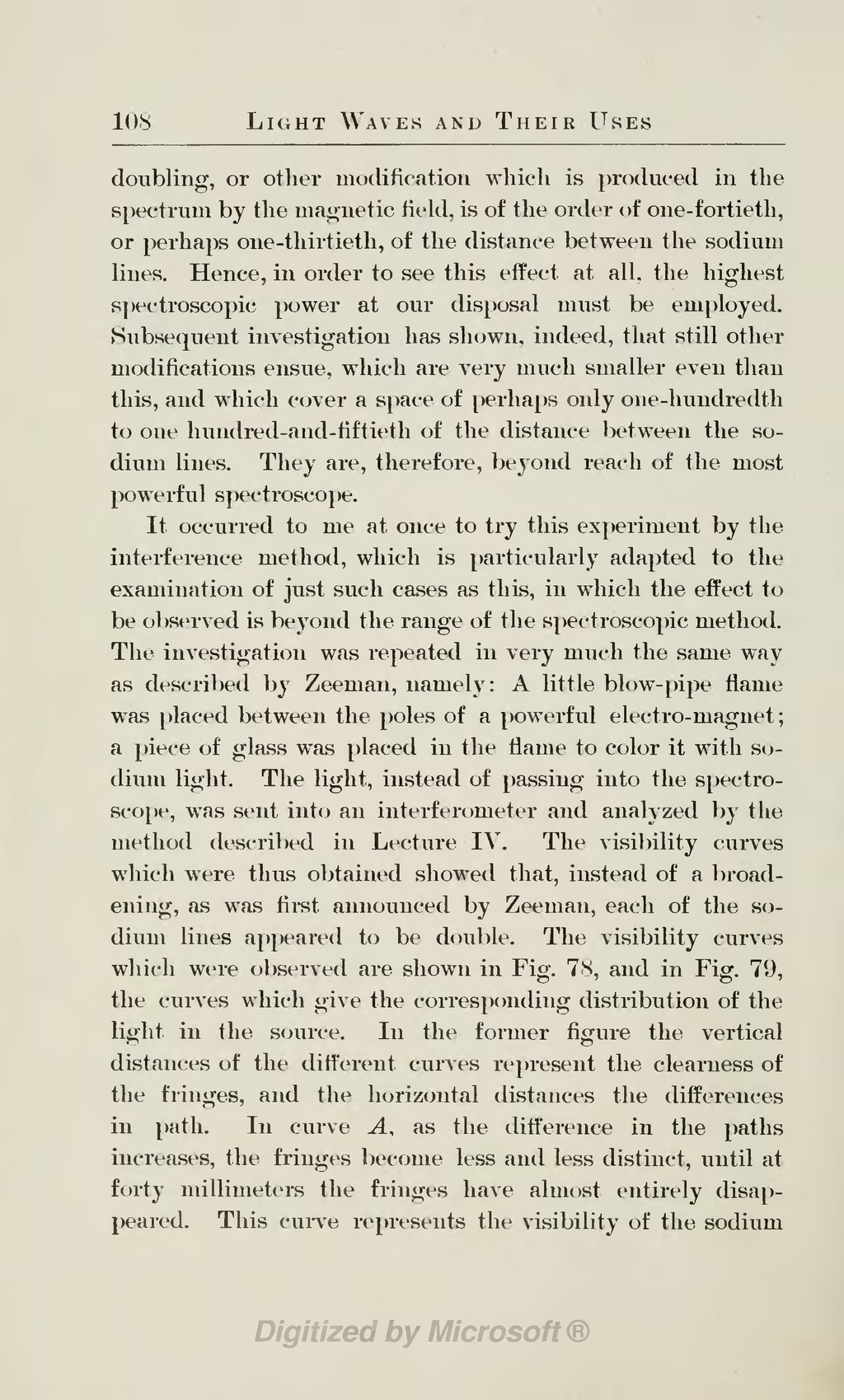doubling, or other modification which is produced in the spectrum by the magnetic field, is of the order of one-fortieth, or perhaps one-thirtieth, of the distance between the sodium lines. Hence, in order to see this effect at all, the highest spectroscopic power at our disposal must be employed. Subsequent investigation has shown, indeed, that still other modifications ensue, which are very much smaller even than this, and which cover a space of perhaps only one-hundredth to one hundred-and-fiftieth of the distance between the sodium lines. They are, therefore, beyond reach of the most powerful spectroscope.
It occurred to me at once to try this experiment by the interference method, which is particularly adapted to the examination of just such cases as this, in which the effect to be observed is beyond the range of the spectroscopic method. The investigation was repeated in very much the same way as described by Zeeman, namely: A little blow-pipe flame was placed between the poles of a powerful electro-magnet; a piece of glass was placed in the flame to color it with sodium light. The light, instead of passing into the spectroscope, was sent into an interferometer and analyzed by the method described in Lecture IV. The visibility curves which were thus obtained showed that, instead of a broadening, as was first announced by Zeeman, each of the sodium lines appeared to be double. The visibility curves which were observed are shown in Fig. 78, and in Fig. 79, the curves which give the corresponding distribution of the light in the source. In the former figure the vertical distances of the different curves represent the clearness of the fringes, and the horizontal distances the differences in path. In curve A, as the difference in the paths increases, the fringes become less and less distinct, until at forty millimeters the fringes have almost entirely disappeared. This curve represents the visibility of the sodium
